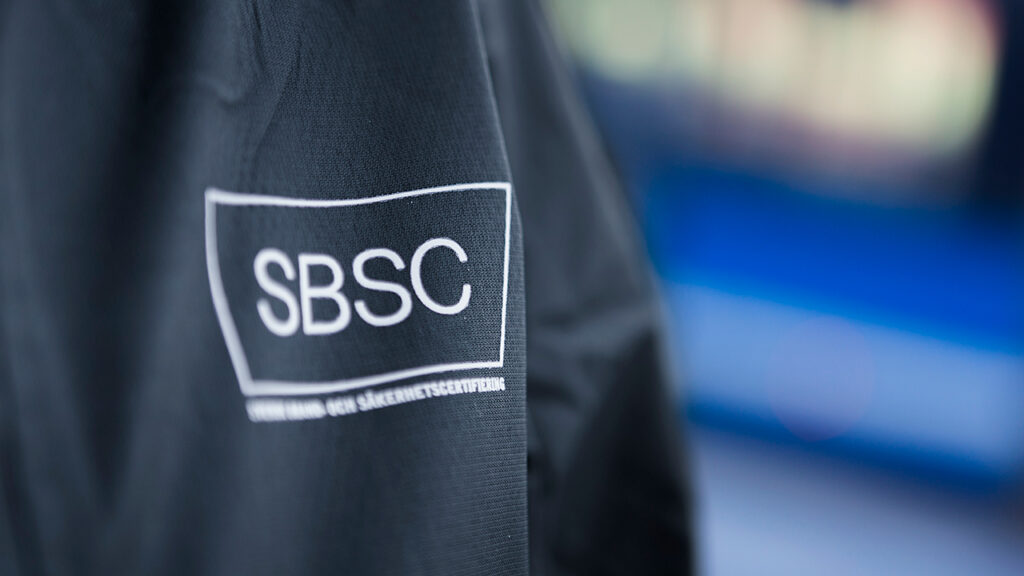SAC Nordic delivers security solutions within the areas of voice evacuation systems, sound systems, emergency lighting, fireproof cables, two-way communications, etc.. The company was founded in 1998, the same year as the tragic discotheque fire in Gothenburg, and is currently a leading provider of security solutions in Sweden. AlbaCon was launched in 1997 and its core business is inspection, consultation and training in the area of fire safety.
What is the market situation for voice evacuation systems today?
“The market for both evacuation alarms and other products withing the area of firefighting is mostly stable, I would say. Due to the pandemic and the war, the problem for the industry has been deliveries to Sweden. Manufacturers have some issues with materials, but I personally do not really see the industry being affected by the downturn in the economy in the same way as many other industries,” says Roger Wittur.
Tomas at AlbaCon also believes that things are moving along and that voice evacuation systems are being installed everywhere from shopping centres, to schools and sporting venues, to churches and large offices.
“For our part, quite a few projects are rolling in, but it is not a giant niche. There is always a little lag in the inspection industry, but we are receiving a steady flow of orders. We also have old systems that we do audit inspections on.”
What has been the result of SBF 502 together with the standards for installation firms and authorised engineers for voice evacuation alarms?
“It has had a huge impact. It was a little bit like the Wild West before the standards were released but, when SBF 502 came out, things became more orderly and there was even a quality seal. A clear standard means that only certified companies and individuals can perform installation work and that it is done more properly. Before, for example, you could come across lines that were taped up,” explains Tomas who has Roger’s agreement.
“The advantage of rules and standards is that they establish how things are supposed to work in a proper way. You can’t just make up rules or use unproven solutions and, when it comes to fires and safety, it is actually only positive.”
Roger, who has “been around the block”, remembers when, in 1982, he received training for the first time in the fire rules and regulations, and points out the advantages of a clear and established set of rules.
“In a few years we will definitely see the advantage of these evacuation standards as well,” he says and emphasises the importance of the fact that standards as well as rules and regulations are produced and evolve over time.
What challenges and problems do you foresee when it comes to voice evacuation systems?
“There are two challenges we see from the perspective of inspection firms. In certain cases, installations are highly substandard since there is a lack of training. Also, there are deficiencies in care and maintenance, and this is due in part to the fact that the rules and regulations do not cover it adequately. On top of this, there is a challenge in testing the system continuously, especially during daytime when a lot of people are around”, explains Tomas who takes the opportunity to bring up
AlbaCon’s new training in installation technology, which includes fire-proof installation and also training for facility managers and those who want to become certified.
Roger sees no problems with the equipment itself, but also wants to emphasise the importance of training.
“As I see it, there are no problems with the products themselves at this time, and there won’t be any in the future,. The challenge is that the installers of equipment and cables must have the necessary know-how for fire-proof installation.”
By way of example, Roger mentions that, in the installation of fire-proof cabling, plastic clamps and plastic zip-ties should not be used.
“Sometimes installers contact us who are worried that they don’t know how to install a fire-proof cable, for example. They know that they do not have the skills to perform a fire-proof installation. And that’s where training comes in.”
Roger states that it would be a good idea to review the training to ensure that anyone who is carrying out fire-proof installation receives adequate training and he would also welcome a requirement that certified installers go through training in fire-proof installation.
“Inspectors are starting to be quite strict about checking the systems, but installers also need the know-how. The right expertise is necessary along the entire chain so that the end result is as safe as you want it to be.”
What possibilities do you see for the future of voice evacuation systems?
“Maybe there will be new technology which makes it possible to have solutions which make things easier. When compared to a fire alarm, voice evacuation alarm systems are currently pretty basic. So there is room for development when it comes to making the systems more flexible,” predicts Tomas, while Roger takes a different view.
“Lock-down alarms! There is a real possibility here, and I see a need for them in the future. I also think that we will make a bigger effort in the future to provide end-customers with solid information so that they will be able to make well-informed decisions before jumping into an installation. A lock-down alarm with good speakers has great potential to be used for so much more than just evacuation during a fire.”
And he says that the future looks bright. In Sweden today, approximately 300 systems are installed per year, and Roger anticipates that the number will double to 600 systems per year within 10 years.
Do you have any other takeaways?
“If you are new to the industry and plan on selling voice evacuation systems, be sure that the products are approved and certified in Sweden. Otherwise, they won’t satisfy the requirement,” says Roger.
Before we conclude our discussion, Tomas takes the opportunity to praise the industry and the positive, frontier spirit that characterises it just now.
“We help each other in this industry. We discuss problems and are generous with the knowledge we possess. And voice evacuation alarms have become much better since SBF 502 was introduced!”
This interview has been translated from Swedish – read the Swedish article here.
Find certified fire protection inspection companies
Find certified installer companies for evacuation alarm with spoken message


